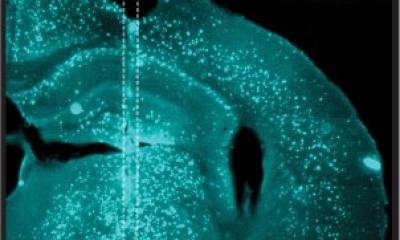Early warning system for Alzheimer's disease
Scientists at the University of Strathclyde in Glasgow are developing a technique based on a new discovery which could pave the way towards detecting Alzheimer’s disease in its earliest stages - and could help to develop urgently-needed treatments.


The technique uses the ratio of detected fluorescence signals to indicate that clusters of peptide associated with the disease are beginning to gather and to have an impact on the brain.
Current techniques are not able to see the peptide joining together until more advanced stages but a research paper from Strathclyde describes an approach which could not only give indications of the condition far sooner than is currently possible but could also screen patients without the need for needles or wires.
Alzheimer’s disease, the most common form of dementia, currently affects around 450,000 people in the UK alone and currently has no cure.
Dr Olaf Rolinski, of the University of Strathclyde’s Department of Physics, led the research. He said: “Alzheimer’s Disease has a devastating impact on people around the world and their families but one of the reasons it is still incurable is that little is known about how and why the peptide that contributes to the disease aggregates in its initial stages.
“When irradiated with light, the intrinsic fluorescence given off by the peptide is like a communication from a spy. We took samples of the peptide and discovered that, where they were in the type of aggregation linked to Alzheimer’s, they produced fluorescence light signals which could be picked up with our technique much earlier than in more conventional experiments, such as those that use the addition of a dye .
“This approach could help us understand better the role of these peptides in the onset of Alzheimer’s and discover ways in which the disease could be stopped in its tracks early on. We now want to take the research further so that it can be used in the development of drugs to treat Alzheimer’s.”
The research paper, by Dr Rolinski and colleagues Professor David Birch and research student Mariana Amaro, has been published in Physical Chemistry Chemical Physics. The project forms part of a £5million Science and Innovation Award in molecular nanometrology, made in 2006, from the Engineering and Physical Sciences Research Council and the Scottish Funding Council.
27.04.2011











